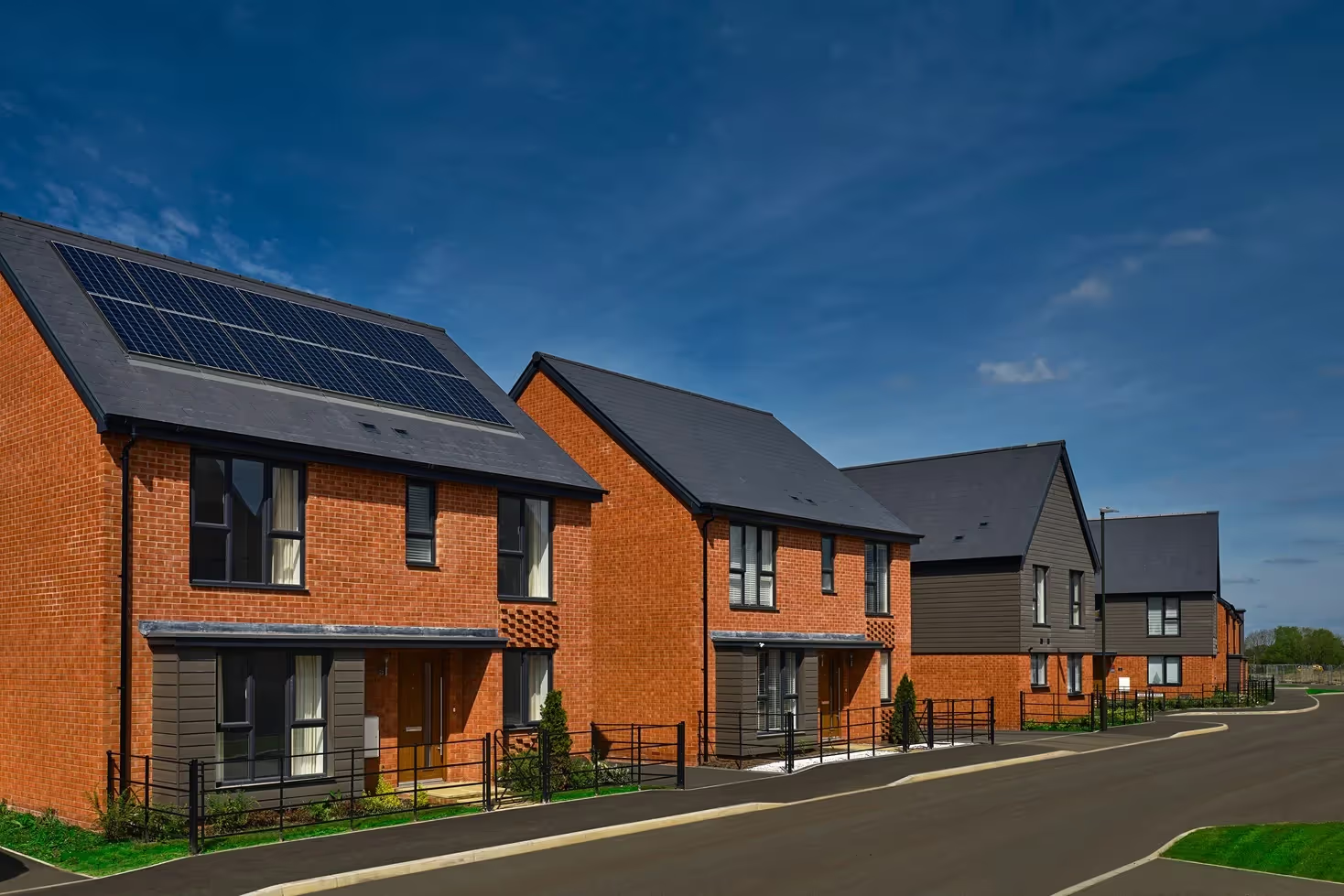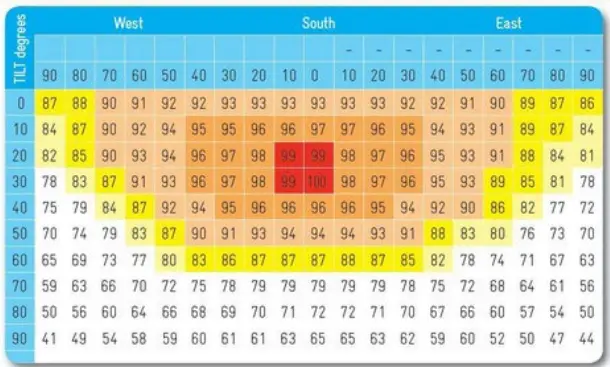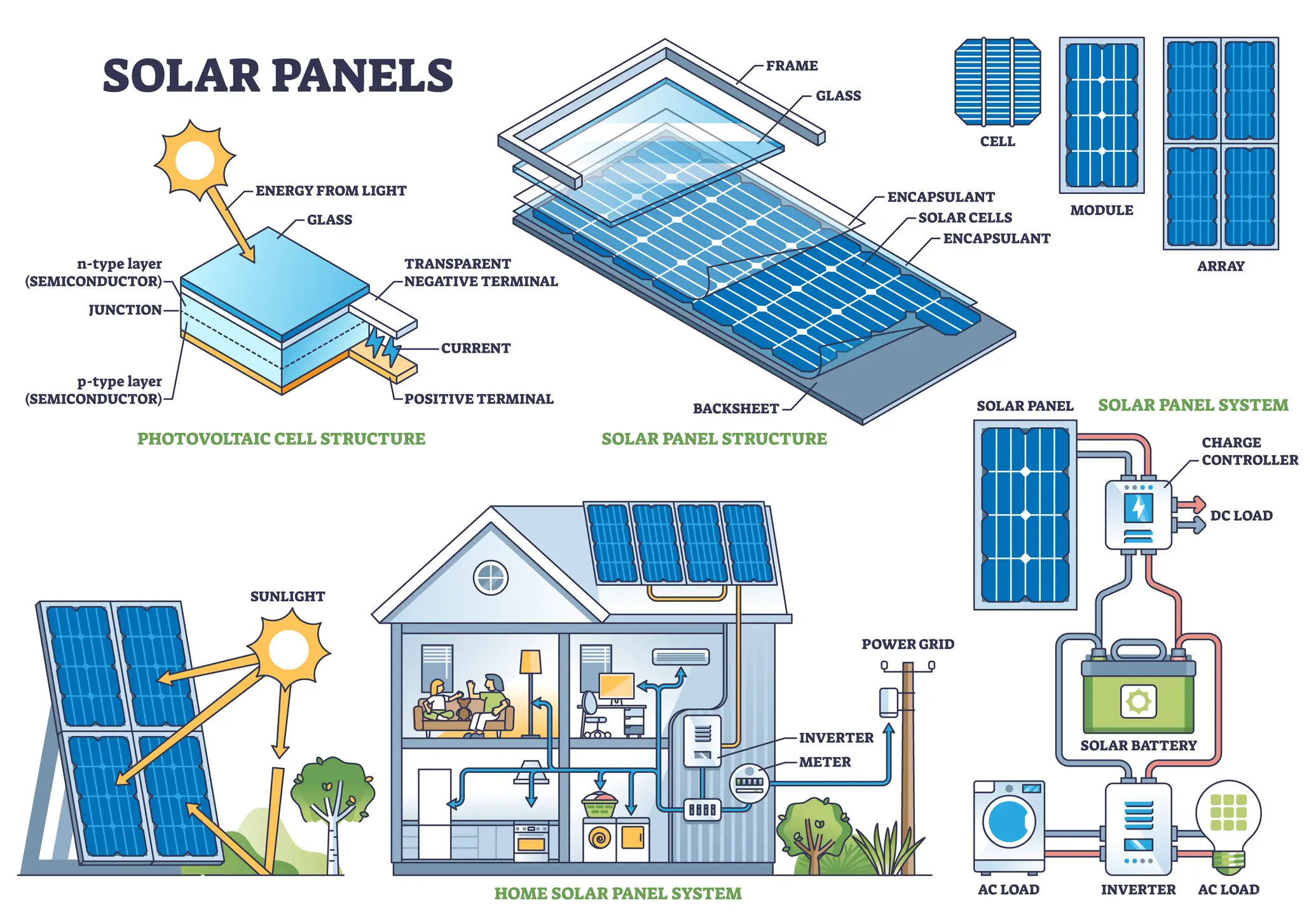
Our guide below covers everything you need to know about how indirect and direct sunlight affects a solar panel’s electricity production.

We’ll also explore how the likes of shading, snow, rain, dust (dirty panels) and overcast days can reduce the peak output of your setup.
Using our clickable solar panel tool here, we’re able to estimate the amount of electricity a system would generate over the space of an average year (accounting for night time, overcast days and more).
Our tool above will also give you a fixed price on-screen for the most suitable system for your property. Systems without a battery (but including installation) start at around £6,000.
Solar panel systems certainly work best in direct sunlight, but they can still generate electricity without it. So, even if your system is partially shaded (by trees or neighbouring buildings), rain, snow or clouds, it's still going to be generating some electricity.
Peak efficiency for solar panels will be when they have direct sunlight. This is in the daytime, usually between 10am-4pm, when the conditions are clear, rather than overcast.
Anything other than these conditions is going to reduce the efficiency and peak output of your solar panel system. Typically, you'd expect efficiency to drop by up to 90% on a cloudy or rainy day.
However, rain does come with its benefits. Heavy rain can wash dust and dirt off your panels, helping to keep them clean and therefore, as close to maximum efficiency as possible.
Remember, the most important factor for solar panels when it comes to energy production is the amount of direct sunlight they can absorb, not heat. Heat does not help panels generate electricity.
The more hours of direct daily sunlight your solar panels get, the more electricity they'll be able to produce. So naturally, your panels are going to produce more electricity in the clearer summer months rather than the darker winter months.
So, how do you really define direct and indirect sunlight?
Direct sunlight is light that hits your solar panels with nothing blocking its path. If you have a roof facing due south, a tilt angle of around 30 degrees and direct sunlight, you'll be close to 100% of peak output.
Anything other than this would be indirect sunlight. This includes:
So, whilst you’ll still generate plenty of electricity via indirect sunlight, direct sunlight on clear days is what gives optimal electricity production.
The difference between indirect vs direct sunlight and how that affects electricity production isn’t all you need to know about. Another important thing to consider is the best roof pitch and orientation. This has a huge bearing on exactly how efficient your solar panels are going to be over time.
Put simply you want:
These are optimal conditions for solar panels. Anything other than this and you’ll see efficiency and electricity drop dramatically. In extreme cases, solar panels may not be suitable for your property due to your roof’s pitch and orientation; they simply won’t produce enough electricity.
We’ve created a full guide to roof suitability for solar panels here. But, this useful graphic from the Energy Saving Trust shows exactly how pitch and orientation reduces peak output of your system as you drift further away the optimal roof type (30 degree pitch and facing due south):

As a worse case scenario, your system might only be able to generate 41% of its peak output.
Unsure if your roof is going to get enough direct sunlight to make solar panels worthwhile? Use our clickable solar panel tool here. Or, speak to one of our solar experts here.
Solar panels will still work on rainy or cloudy days. However, as the amount of direct sunlight is reduced by clouds or water droplets, the rate of electricity production is going to reduce dramatically.
This is where picking the correct type of panel becomes important.
The two main types of solar panels are monocrystalline and polycrystalline. Of the two, you'll want monocrystalline.
Monocrystalline solar panels feature much more up to date technology. Not only are they able to produce more electricity on an average day, they'll also produce a lot more on rainy and cloudy days than their polycrystalline counterparts.
A typical monocrystalline solar panel (such as the LONGi Hi-Mo 6) can achieve 23.2% efficiency with a 25-year performance warranty (output of 88.9% after 25-years).
Compare this to a polycrystalline panel from UKSOL which only comes with a 12-year material warranty, and performance warranty that covers 80% of initial output after 30 years.
Put simply, the most cost effective and efficient solution is always a monocrystalline panel, from a leading brand like LONGi.
Read a more detailed guide covering monocrystalline vs polycrystalline solar panels here. And a detailed review of the high performance LONGi solar panels here.
Estimating the amount of electricity that your solar panels will generate daily, monthly and annually is no easy task. For a start, it's hard to calculate the amount of hours that will be direct or indirect sunlight.
Alongside that you'll have to account for things such as:
However, for estimations sake, from a 5kWh solar panel system in the UK, you can expect to generate:
You can read more about how much electricity solar panels produce here.

How much direct sunlight your solar panels get affects their electricity production. But there are dozens of other factors to consider, including where you live and how many daily sunlight hours your property gets.
Here are a couple of things to consider before installing solar panels.
Before investing £6,000+ into a solar panel system, it’s worth assessing the suitability of your property.
Not only will you need a suitable roof, you’ll need to ensure it’s not shaded by trees, hedgerows, buildings or chimneys. If your roof is even partially shaded the majority of the time, solar panels may be so far away from their peak output that they’re not worth installing.
Speak to our solar experts here to determine if solar panels are suitable for your property.
Solar panels do work in winter. The productivity of your system is based on your roof's pitch, orientation and the volume of direct sunlight.

Remember, these systems don’t rely on heat. In fact, the lack of heat can actually be a benefit.
Photovoltaic (PV) cells in solar panels can actually become less efficient in extreme heat. In colder months, there's going to be less resistance on electrical circuits, allowing your system to produce just as much (if not more) electricity on a clear winter's day, as it would on a clear summer's day.
Solar panels won’t generate electricity at night. As soon as it’s dark, electricity production will stop. This is why a lot of people who have a solar panel system installed, will couple it with a solar storage battery.
Electricity is generated during the day, when most people are at work. Without a solar storage battery, the electricity generated during the day would be:
The much better option is to install a battery. For a typical 2-3 bedroom property, adding a solar battery onto a 5kWh solar panel system is likely to bump your electricity self sufficiency from around 25% to over 50%. You'll be much less reliant on the grid.
Our customisable solar panel systems can come with or without a battery, with our smallest units starting at £2,495.
Read more about solar panel batteries here.
Alternatively, use our clickable solar panel tool to see how adding a suitable solar storage battery affects your overall installation cost.
Try our free quote tool. You'll have your personalised quote in under a minute.